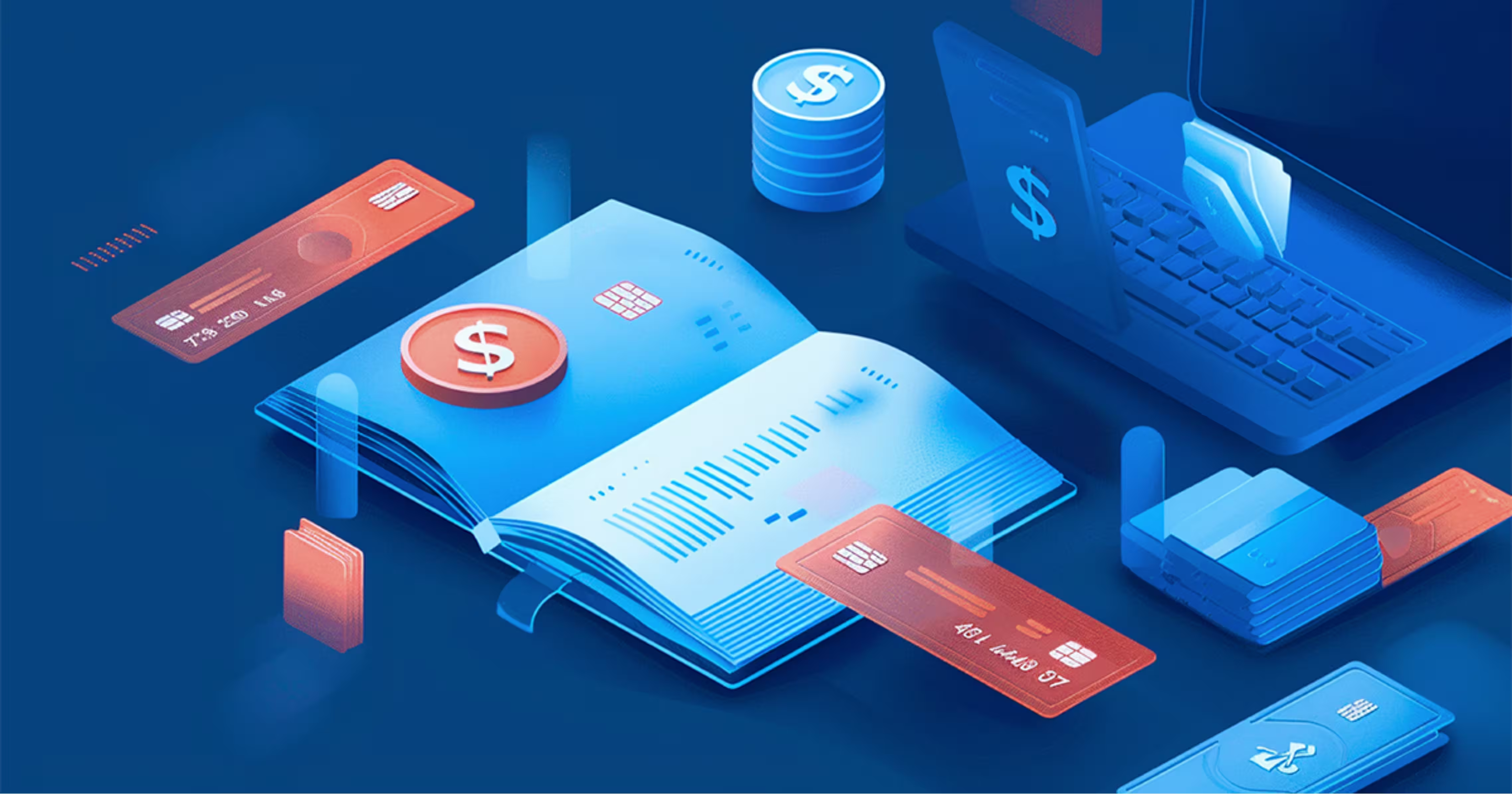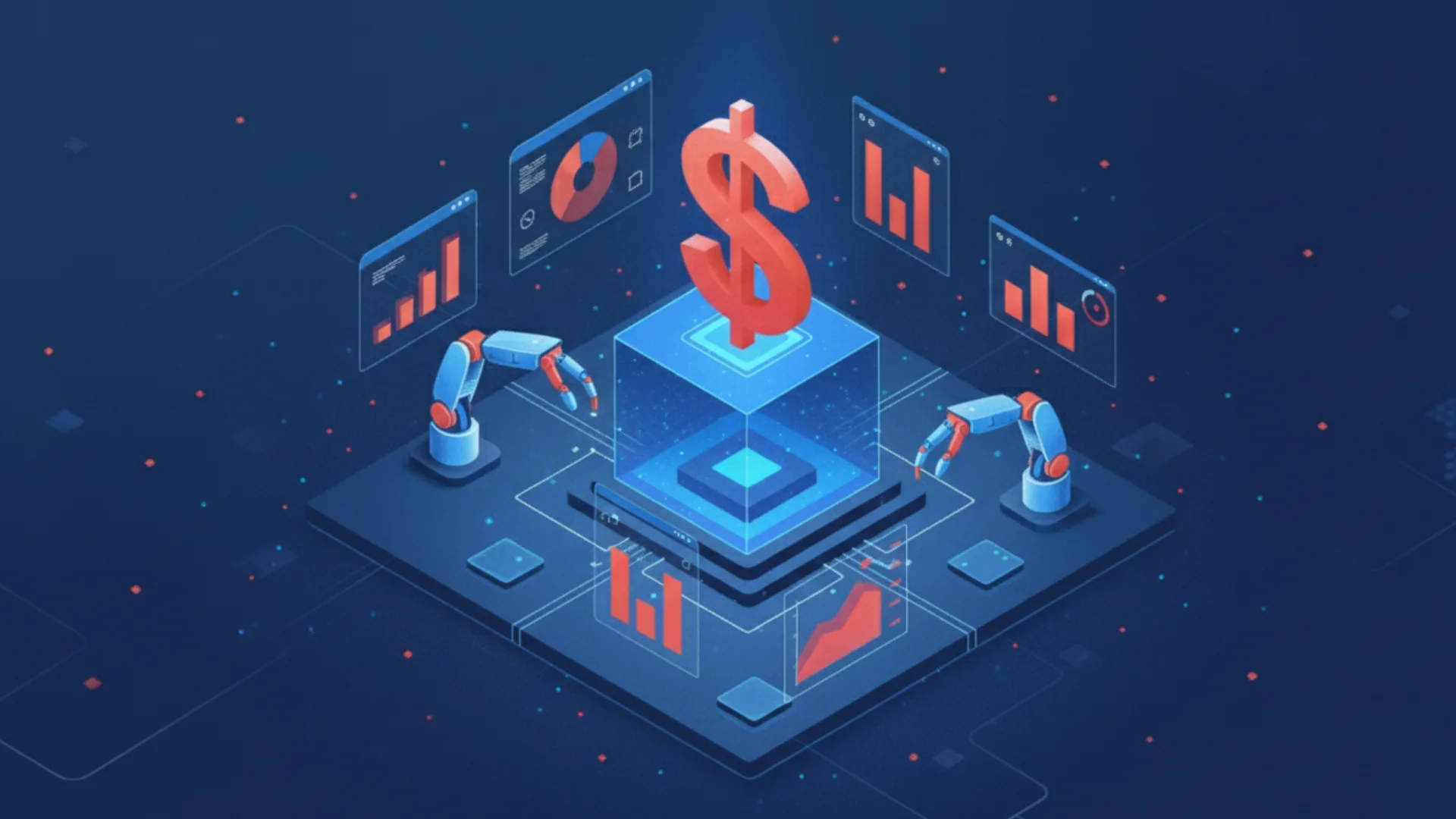Implementing Usage-Based Billing in 2025 (A Non-Technical POV)

Consumption-based pricing, pay-as-you-go, pay-per-transaction, unit-based pricing, or metered billing. However, you may refer to it, ‘usage-based pricing’ is by far the most desired pricing model today (we will get to the why in a bit).
Usage-based pricing is where customers only pay for what is consumed. This model calculates pricing based on volume rather than other metrics such as the number of users. In recent years, usage-based pricing has become increasingly prevalent within the Software-as-a-Service (SaaS) industry. In most cases, this replaces the more traditional subscription- and seat-based pricing models.
Let’s take the case of Zapier. They recently sparked a debate when they announced their ‘pay-per-task billing’ model.

So how does the new plan work?
For starters, Zapier has opened up access to value (# of zaps) by providing more flexibility with a pay-as-you-go model. Each extra task that exceeds your plan limit is charged on a per-task basis.
Prior to Zapier, Intercom made the switch, moving their product ‘Fin’ to pay-per-resolution instead of a monthly subscription.

What is usage-based billing?
Usage-based billing (also known as consumption billing or metered billing) is a pricing strategy where customers are charged based on the amount of a product or service they actually use. Unlike flat-rate pricing, where businesses charge a fixed amount regardless of consumption, usage-based billing aligns pricing with the value customers derive from the service.
In usage-based billing, businesses measure the exact units of consumption to determine how much to charge customers. This can include metrics such as the number of transactions, amount of data consumed, or usage time. The pricing is calculated based on a usage quota, which is a pre-defined limit on the amount of service or product a customer can consume within a set time period, typically measured in units or volume.
For example, a cloud storage provider might allow customers to store up to 100GB for a fixed price. If a customer exceeds that quota, they would incur additional charges for the extra storage used. These overages are the additional fees applied when a customer goes beyond their pre-set usage limits.
Here’s a quick overview of the different usage-based pricing models commonly used in business.
How is consumption-based billing value-driven?
Today, most companies are moving away from fixed cost–based models to value–based ones, leveraging pricing psychology to align costs with how customers perceive value.
Usage-based billing is a great way for companies to generate revenue based on the actual value delivered. Unlike traditional pricing models, which often impose fixed costs regardless of actual usage, usage-based billing ensures that customers pay in proportion to the value they receive.
According to a report by OpenView, three out of five SaaS companies have started to use usage-based pricing.

For SaaS companies, usage-based billing is not just an ideal approach to provide more value to customers but also to create a more stable revenue stream that is reflective of the value derived by customers.
Moreover, adjusting pricing as the value delivered increases allows companies to capture more revenue without overcharging customers.
Pay-as-you-go business model examples
Zoom, Zapier, and 100ms champion usage-based billing in varying ways.
1. Application SaaS
Zoom offers video conferencing and collaboration software with various pricing plans to suit different usage needs. While some plans have fixed monthly fees, others operate on a consumption model, with charges based on the pay per use model (number of participants or meeting minutes).

2. Middleware SaaS
Zapier employs a usage-based pricing approach by offering a pay-per-task consumption based pricing model. It tracks the number of tasks executed during automated workflows (Zaps), measured against the user's plan allowance. When a user exceeds the task limit of their subscription plan, additional tasks are charged on a per-task basis.

Source: Zapier
3. Infrastructure SaaS
100ms is a communication infrastructure company specializing in building audio and video applications. It offers volume and custom pricing based on consumption metrics. Initially, the company needed help with underbilling and manually tracking startup credits. With Zenskar's help, 100ms automated its billing process, eliminating invoicing errors and increasing revenue by 4%. Zenskar also improved customer retention through real-time usage reports and customer-facing portals.
.avif)
Source: 100ms
Benefits of usage-based billing
Usage-based billing provides various benefits over traditional subscription models.
1. Flexibility in pricing
Usage-based billing offers customers and businesses a great deal of flexibility. While customers can scale their usage up or down based on their needs and budget constraints, businesses have the choice to tie pricing to different value metrics.
2. Transparency in billing
Customers appreciate being able to track their usage and costs under usage-based billing. When businesses offer clear and transparent pricing, it helps them build trust and credibility with their customers, allowing them to strengthen customer relationships and differentiate themselves in the market.
3. Value alignment
Usage-based billing aligns with the value customers derive from the product or service, ensuring they pay for the features and functionalities they find most valuable. From a business perspective, aligning pricing with the value delivered ensures that these businesses capture the full value of their offerings, better monetize their products or services, and, in turn, increase profitability.
4. Scalability
For customers, usage-based billing allows them to scale with their usage growth without experiencing any limitations or interruptions. Similarly, businesses can accommodate increasing demand without making any upfront investments in infrastructure or capacity.
5. Customer retention
Customers are most likely to remain loyal and committed to a business that offers transparent and flexible pricing that is closely aligned with their needs and usage patterns. Usage-based pricing helps businesses reduce churn and increase customer lifetime value by providing options that cater to varying customer needs and preferences.
How do you connect usage-tracking tools to billing systems?
To connect usage-tracking tools to billing systems, you need to establish a flow where your tracking system sends usage data to your billing software, allowing it to calculate and process charges accurately. This involves configuring meters to track usage, setting up a pricing model, and integrating the metering system with the billing platform.
Here's a more detailed breakdown:
1. Configure meters
- Define usage metrics: Identify what you want to track, such as API calls, storage usage, or streaming minutes.
- Choose meter types: Select appropriate meters like "Counter" (total usage), "Gauge" (current level), or "Delta" (change over time).
- Consider accuracy and granularity: Determine the level of detail needed for your billing calculations.
2. Set up a pricing model
- Choose pricing strategy: Select a usage-based billing model, like tiered or volume pricing.
- Define rates and thresholds: Establish specific pricing for different usage tiers or volume levels.
3. Integrate metering and billing
- Use APIs or direct database access: Your usage tracking tool should provide APIs or direct database access to share usage data with the billing system.
- Establish a data pipeline: Ensure a reliable way to send usage data from the tracking system to the billing system.
- Configure billing rules: Set up rules in your billing software to calculate charges based on the incoming usage data and your pricing model.
How do you implement usage-based billing?
The good news is that today's software can effortlessly track metrics such as the number of SMS sent, data bandwidth consumed, or API calls made. To effectively implement this model, selecting the right usage-based billing software is crucial for accurate tracking and invoicing.
According to Bessemer Partner Ventures’ State of the Cloud 2021 report, the usage-based pricing model has been on the rise because it goes hand-in-hand with product-led growth. Daniel Sharon, Head of Ops & Finance at Qwak, joined us for a webinar and talked about how usage-based pricing is central to PLG’s success. You can watch it here.
“It minimizes the friction of getting started by allowing the customer to start at a low cost — and only pay more as they receive more value.”
— Daniel Sharon
Having said that, implementing usage-based billing introduces a whole new set of complexities that require careful consideration.
We will get into how you can address each one of them.
Let’s start with understanding the responsibilities of the stakeholders involved in the process.
A breakdown of the stakeholders involved:
1. Sales
First up, let's consider the sales team, which engages with customers directly. Their primary focus isn't billing; rather, they invest their time in negotiating deals that provide optimal value to customers while maximizing revenue for the company. Documenting the terms of the agreement is crucial for them to ensure customers receive more value than they pay for, thereby maximizing customer satisfaction and loyalty.
2. Tech and product
The tech and product teams are responsible for delivering the service or product to customers. Their primary concern is ensuring the quality and delivery of the service, not billing. They track the services provided to different customers to maintain accurate records.
3. Finance
The finance department takes the lead in determining the billing strategy, which significantly influences adoption rates and customer activation. They are responsible for translating the terms of the contract into actionable billing processes. They start by reviewing the contract signed with the customer to determine if it contains sufficient information to generate an invoice. If additional service data is required, they collaborate with the tech or product teams to obtain the necessary details. Subsequently, the finance team creates and sends invoices to customers, ensuring accuracy and promptness in the billing process.
We will now look at the steps that you need to take to deploy a usage-based strategy for your business.
Step 1: Identifying pricing axes
Whether you're entering into usage-based pricing contracts that are valid over a period of time or getting started with a new venture — the initial phase of integrating usage-based pricing is crucial. It all begins with identifying the axes along which your products or services can be priced. These axes essentially serve as the foundational parameters guiding how usage will be measured and billed.
Consider a scenario where your company provides cloud storage services. In this context, potential pricing axes could cover storage capacity, data transfer volume, or the number of active users. Each axis represents a vital dimension that influences how customers interact with and consume your offerings. By outlining these axes clearly, you pave the way for a structured and transparent pricing framework that aligns seamlessly with your business objectives and customer needs.
Examples of pricing axes and metrics:

Step 2: Tracking usage
Implementing usage-based pricing requires robust mechanisms for accurately and comprehensively tracking usage data. This involves capturing information about the services rendered to customers, including frequency, duration, and intensity of usage. While manual methods like spreadsheets may suffice for smaller-scale operations, larger enterprises often rely on automated tools for streamlined data collection.
For instance, a cloud storage provider may use automated monitoring tools to track storage capacity, data transfer volumes, and user activity levels in real time.
To effectively track usage, businesses need to monitor the services they provide, including information that is not explicitly outlined in contracts, such as pricing details.
There are several methods to accomplish this.
- Manual spreadsheet tracking
For services requiring intensive human involvement, like drafting legal contracts, manual tracking via spreadsheets can be employed.
Here's a simple example of how such tracking might look:

- Automated tools
Some companies may have automated systems in place to track usage. This could be third-party software or internally developed tools.
Step 3: Integrating usage data with billing systems
The smooth integration of usage data with billing systems is critical for efficient invoicing and revenue management. Integration methods may vary based on infrastructure complexity and scalability. Whether through direct data inputs or API-driven integration, the goal is to establish a cohesive ecosystem where usage data seamlessly flows into the billing system, facilitating accurate invoicing and financial reporting.

Here's a breakdown of the methods to achieve this integration:
Manual spreadsheet tracking
If you're manually tracking data using spreadsheets, you have the option to upload this data directly into your billing system. For instance, let’s say you're keeping track of customer usage metrics in a spreadsheet format. With integration capabilities, your billing system can absorb this data, automating the billing process and reducing manual effort.
Internal software integration
Now, let's consider a scenario where your usage data is already stored within your internal software systems. In such cases, your billing system can be configured to interface directly with your data repositories. For example, if your internal systems maintain records of customer interactions or service usage, your billing system can tap into this data repository, pulling relevant metrics for billing purposes.
This could be done without any involvement from your product development or tech team. Or you can send this data into your billing system via APIs. Engineering efforts may be required to set up this integration, but it provides a reliable and automated way to transmit data.
Integration with third-party software
In cases where usage data is stored in third-party software, your billing system can integrate with these platforms to extract relevant data. This integration can occur in various ways: your billing system might be equipped to directly interface with the third-party software, retrieving usage metrics as needed. Alternatively, your engineering team could develop a solution to facilitate data transfer between the third-party software and your billing system via APIs.
API-driven data flow
If your usage data flows exclusively through your software but isn't stored anywhere yet, APIs provided by your billing system can be utilized to send this data directly to the billing system. This approach ensures that relevant usage metrics are captured and processed by your billing system, even if they're not stored within your internal infrastructure.
It's important to note that each integration method requires specific functionality supported by your billing system. While some systems may offer comprehensive integration capabilities, others may lack certain features, emphasizing the importance of evaluating your billing system's capabilities before implementation.
By selecting the most suitable integration method and leveraging the capabilities of your billing system, you can establish an uninterrupted flow of usage data.
Step 4: Defining billable metrics
In setting up an effective billing system, the subsequent step involves defining billable metrics and usage aggregates that will serve as the basis for customer charges. It's crucial to note that these metrics are derived from raw data, representing quantifiable aspects of the provided services. This step is undertaken independently of pricing considerations, as contracts with customers may not yet have been established at this stage.
Let’s understand this better with a few examples.
- Total number of SMSes
For a bulk SMS provider, one of the fundamental metrics could be the cumulative count of SMS messages, irrespective of individual pricing considerations.
- Total number of characters in SMSes
The aggregation of characters within SMS messages offers an additional metric. This can be relevant for services that involve textual content.
- Total storage usage
For services that involve data storage, quantifying the total storage utilized becomes a key metric. This metric can vary widely based on the nature of the services provided, ranging from cloud storage to database usage.
- Total number of transactions
Transactional services, common in various industries, can be measured by aggregating the total number of transactions. This metric is key for businesses dealing with financial transactions, e-commerce, or other transactional models.
It's imperative to emphasize that, at this stage, these defined metrics are decoupled from specific pricing structures. The objective is to establish a versatile library of potential metrics that sales teams can leverage when structuring deals with customers. This approach ensures flexibility and adaptability in accommodating diverse customer needs and preferences.
Step 5: Contract creation and pricing flexibility
In the final phase, the pivotal task is to create contracts that reflect the agreed-upon prices, which may or may not be contingent on the previously defined usage aggregates. This critical stage relies heavily on the expertise and negotiation skills of your sales team, in conjunction with the agility of your billing software's contracting engine.
A robust contracting engine will enable salespersons to tailor contracts precisely to match the customer's requirements and perceived value.
Depending on the nature of the services and the preferences of the customer, pricing structures may vary significantly. The sales team must navigate through diverse pricing scenarios, considering factors such as volume discounts, usage tiers, and special agreements.
Moreover, it’s important to regularly re-evaluate your pricing methods as your offerings and customer demographics evolve. Consider integrating a mix of seat-based, usage-oriented, tiered, and subscription pricing models to better reflect the unique value propositions of your offerings.
Challenges of usage-based billing
There are a few concerns that you may encounter in implementing usage-based billing. Let’s look at how to overcome these usage-based billing challenges:
1. Complexity in pricing
The usage-based pricing model introduces a new layer of complexity, especially concerning the difficulty in determining the suitable value metric and its associated price for some products and services. The best way to address this is to rely on customer feedback to understand their usage patterns. This will help you ascertain the perceived value of different features and allot the most relevant value metrics to them.
2. Unpredictability of revenue
Usage-based billing brings with it revenue volatility, making it difficult for businesses to forecast and plan for future income. While diversifying your revenue streams can help stabilize overall revenue, you can also encourage customers to sign long-term contracts or commit to a certain usage level in exchange for discounted pricing or other incentives. These long-term commitments can provide more predictability in revenue.
3. Cost control
Under a usage-based pricing model, customers may struggle with bill shocks. This challenge highlights why popular billing tools fail to handle metered billing effectively. Thus, it is important to provide them access to real-time usage metrics. This will help them know what to expect and save them from exceeding budgeted usage levels.
4. Regulatory compliance
Compliance with regulatory requirements related to usage-based billing, such as data privacy and consumer protection laws, can add another layer of complexity. These challenges arise from varying accounting standards (like GAAP and IFRS), local tax laws, and consumer protection regulations related to billing practices. Some of the ways to address this include conducting regular audits and establishing a comprehensive legal and compliance framework that outlines the regulatory requirements applicable to usage-based billing. Adherence to either Generally Accepted Accounting Principles (GAAP) or International Financial Reporting Standards (IFRS) and local tax laws, including VAT, sales tax, and other forms of taxation is also key.
What makes the best consumption-based billing system?
A billing system should follow these best practices of SaaS usage-based pricing.
1. Automates billing
Without automation, inconsistencies like underbilling or overbilling are more common, especially with consumption pricing models. This is crucial for businesses like 100ms, which, prior to automation, faced issues with invoicing errors. Automating metered billing saves finance teams and engineers time, allowing them to focus on strategic tasks instead of spending hours calculating usage and creating invoices.
Automated billing systems also scale effortlessly as your business grows. Whether your customers increase in number or their usage patterns become more complex, the system can handle increased data processing without additional manual intervention.
2. Real-time usage tracking
Billing systems typically approach usage tracking and data aggregation in two different ways:
- Linear — where metering is tightly integrated with pricing, you'll have to aggregate usage data at the source before sending it to your billing tool.
- Decoupled — where metering and billing are considered separate entities, you can send raw usage data to your billing system in real-time.
We suggest the second approach because it gives you real-time access to usage data. This, in turn, can help you provide your customers with a usage-tracking dashboard so they can monitor their usage and avoid 'bill shock' on invoice day.
3. No-code/low-code tools
This one’s especially important for early-stage startups. Choose a billing system that provides out-of-the-box data syncing capabilities, automation, and API support.

Source: X
Some key features of a billing platform include drag-and-drop pricing and contract designers, direct (or API-supported) integrations with data sources, payment processors, CRM systems, and automated subscription management. These can free up bandwidth for your finance and engineering teams.
4. Provides customers with detailed billing breakdowns
Clear, itemized consumption billing statements allow your customers to understand how their charges are calculated, reducing confusion and fostering trust. When your customers can easily trace their usage data and how it translates into costs, they are more likely to feel confident in the consumption based model, which is crucial for long-term customer relationships and retention.
5. Conducts regular audits
A billing system with built-in auditing capabilities helps ensure that billing remains accurate and compliant with contractual agreements. It will identify missed charges or incorrect invoicing, which could be a source of revenue leakage, and ensure that all usage data is processed correctly.
According to a study by Deloitte, companies that routinely audit their billing systems report higher profitability and lower fraud risk.
6. Flexibility in pricing models
While usage-based pricing is here to stay, there are many ways to implement it. AI technology companies often use a credit burndown model where users pre-purchase task credits.
Then there are the other subsets of consumption based pricing, like fixed tiers with monthly overages, volume-based (or quantity-discount) pricing, and so on. This means there are endless ways to add usage-based components to your pricing strategy.
Here's an example: Replit (an AI-powered DevOps tool) has fixed tiers that include a certain amount of credits. If you burn your credits, you'll be charged extra at the end of your billing cycle. That's tiered, credits, and overages—all in one pricing strategy.

Source: X
So, ensure that the tool you pick supports all pricing models. That way, you can go all in on your pricing strategy without worrying about your billing system holding you back.
Best usage-based billing systems in 2025
If you’re starting your usage-based pricing journey, you’re probably asking yourself — which of the many billing software solutions in the market would be the right fit for my SaaS business?
Read our guide where we compare 11 best usage-based billing tools across key criteria — flexibility, developer effort required, and pricing.
Unlock growth for your SaaS business with Zenskar, the top choice for those seeking efficiency and scalability for their used-based billing model.
💡 100ms is a New York based video infrastructure startup. It was committed to predictable pricing and transparency, but they lacked the infrastructure to offer their clients visibility into usage. After onboarding with Zenskar, they were able to provide granular usage data, and more. Read how Zenskar saved their engineering team from 250 hours/month grunt work.
.png)
Source: Zenskar
Try Zenskar’s no-code usage-based billing infrastructure
Managing complex usage-based contracts can be a never-ending uphill battle, especially when handling inconsistent data and manual billing errors.
Zenskar makes it easy with a billing system designed for seamless data integration. Our system seamlessly integrates data from spreadsheets, APIs, or manual inputs, pulling everything from where it already exists, ensuring no more manual entries or mismatched information.
Zenskar gives you and your customers real-time visibility into usage, automating every step—from tracking data to generating invoices and ensuring revenue recognition compliance. Need to handle intricate contracts? Our drag-and-drop builder makes it a breeze to configure even the most complex agreements, while event-based tracking lets you experiment with pricing models effortlessly.

Source: Zenskar
And you're never alone. When you sign up, we support you with 24/7 assistance, dedicated customer success teams, and custom integration options. Book a free demo with our team today to automate your billing process end-to-end.
Frequently asked questions
Usage-based pricing in SaaS charges customers based on their actual software usage, such as data storage or features accessed, similar to a pay-per-use model.
Here are some of the most commonly used types of usage-based pricing:
1. Tiered usage-based pricing: Customers pay based on usage limits within tiers in a tiered pricing model. Exceeding a tier moves them to the next, typically at a higher price per unit.
2. Per-unit pricing: Customers are charged a fixed price for each unit consumed, with no changes, regardless of usage volume.
3. Volume-based pricing: Pricing scales with the volume consumed; the more a customer uses, the lower the price per unit.
4. Hybrid model: A mix of subscription and usage-based pricing, where users are charged a fixed amount plus variable fees based on consumption.
Usage-based billing for cloud solutions charges are based on resources consumed, like computing power or storage. The pricing structure scales with usage.
The usage-based billing model charges customers based on actual consumption, while metered billing tracks and charges for specific metrics like data usage or transactions.
Metered usage charges customers based on specific, quantifiable metrics like data consumption, while measured usage tracks broader usage patterns over time.



















%20be%20truly%20invisible_.webp)








